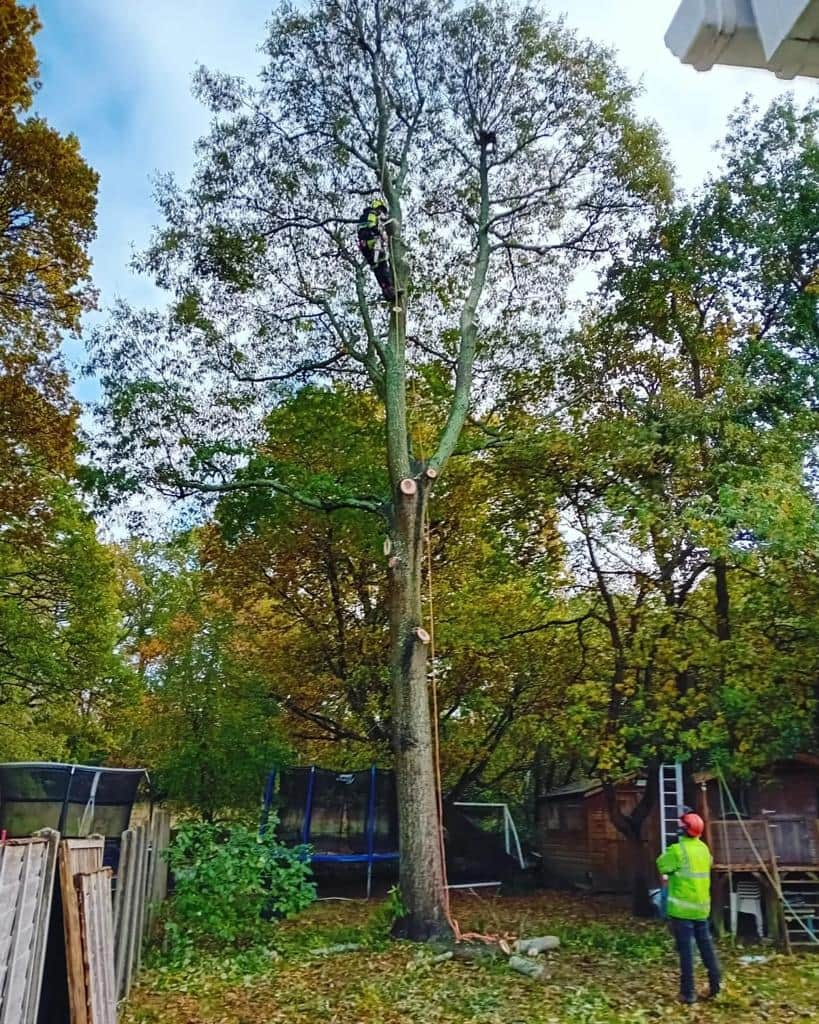Tree pruning is an essential task for maintaining the health, appearance, and safety of trees on your property. It helps to remove dead or diseased branches, encourages healthy growth, and improves the tree’s overall shape. However, knowing when and how to prune your trees can be a bit challenging, especially when there are different species, growth patterns, and seasonal considerations to take into account. In this blog post, we’ll provide you with practical tips on how to plan a tree pruning schedule that fits your needs and ensures the long-term health of your trees.
1. Understand the Different Types of Pruning
Before you create a pruning schedule, it’s important to understand the different types of pruning and when each should be done:
- Maintenance Pruning: This is done regularly to remove dead, damaged, or diseased branches and maintain the tree’s structure. It’s a light pruning that helps improve the tree’s health and appearance.
- Structural Pruning: This type of pruning is usually done on young trees to guide their shape and structure. It’s important to set the foundation for the tree’s long-term growth.
- Formative Pruning: Primarily done on young trees, formative pruning shapes the tree and encourages good structure for future growth.
- Crown Reduction Pruning: This is performed on mature trees when their canopy becomes too large. It reduces the size of the canopy to prevent overgrowth and reduce the risk of damage during storms.
Understanding these types of pruning will help you decide which methods are best for your trees at various stages of growth.
2. Consider the Species of Tree
Different species of trees have different pruning needs and optimal times for pruning. Some trees benefit from pruning during specific seasons, while others require more frequent attention.
- Deciduous Trees: Trees that lose their leaves in the autumn, like oak and maple, generally benefit from pruning in late winter or early spring, just before new growth begins. This allows the tree to heal quickly before the growing season.
- Evergreen Trees: Evergreens such as pines and firs can be pruned in late spring or early summer after the new growth has hardened off. Pruning at this time helps ensure the tree remains healthy and maintains its natural shape.
- Flowering Trees: For trees that bloom in the spring, it’s best to prune them right after they’ve finished flowering. For summer-flowering trees, prune in late winter or early spring before the new growth starts.
Knowing the specific needs of your trees will help you schedule pruning at the ideal time, maximising the benefits and promoting healthy growth.
3. Factor in the Health of the Tree
A tree’s health plays a big role in determining how often and when it should be pruned. Regular pruning helps to remove dead or diseased branches that could harm the tree. However, if your tree is struggling with a disease or pest infestation, it may require special care or pruning at specific times to prevent the issue from spreading.
Regularly inspect your trees for signs of poor health, such as yellowing leaves, wilting, or fungal growth. If you notice any of these signs, contact a professional tree surgeon to assess the situation and provide guidance on the best time and type of pruning.
4. Assess Your Property’s Needs
When planning a tree pruning schedule, consider the needs of your property. Trees that are too close to buildings, fences, or power lines may need more frequent pruning to prevent overgrowth and minimise the risk of damage. In these cases, you’ll need to plan for regular pruning to ensure that the tree doesn’t interfere with structures or utilities.
In addition to safety, you may want to prune trees for aesthetic reasons. Pruning can help improve the shape of the tree and ensure it complements your garden’s design. This can be particularly important for trees in front gardens or areas visible to guests and passers-by.
5. Create a Seasonal Pruning Plan
A seasonal pruning plan is essential for ensuring that your trees are pruned at the right time. You may want to schedule pruning in the following way:
- Winter (Dormant Period): This is an ideal time for structural and maintenance pruning, as trees are not actively growing. It’s also the best time to remove dead or diseased wood, as it’s easier to spot when the tree is bare.
- Spring: In spring, pruning should focus on shaping and maintaining trees after the cold months. This is also a good time to conduct light pruning for trees that bloom in summer.
- Summer: Summer pruning can be used for light shaping or trimming to maintain the tree’s appearance and manage growth. Avoid heavy pruning during summer as it may stress the tree.
- Autumn: Autumn pruning is often reserved for trees that flower in spring, as they should be pruned right after flowering.
By planning your pruning around these seasonal windows, you can ensure that your trees receive the care they need to thrive.
6. Consult a Professional Tree Surgeon
While it’s helpful to have an understanding of tree pruning, consulting a professional tree surgeon is always recommended, especially for large or mature trees. A qualified tree surgeon will assess the condition of your trees, offer expert advice, and ensure that pruning is done correctly and safely.
At EM Tree Surgery Thornbury, we offer comprehensive tree pruning services tailored to your needs. Our team of experts can help you plan a pruning schedule that promotes the health and beauty of your trees while ensuring safety and minimising damage.
Conclusion
A well-planned tree pruning schedule is key to maintaining healthy, attractive trees that add value to your property. By understanding the types of pruning, considering tree species, and assessing your property’s needs, you can create a schedule that ensures your trees receive the right care at the right time. If you’re unsure about when or how to prune your trees, contact a professional tree surgeon to get expert advice and assistance.
At EM Tree Surgery Thornbury, we are here to help you with all your tree pruning needs in Thornbury, Gloucestershire. Contact us today to learn more about our services and schedule a consultation.
Call us on: 01454 802 782
Click here to find out more about EM Tree Surgery Thornbury
Click here to complete our contact form and see how we can help with your tree care needs.

